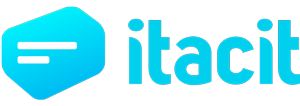It’s no surprise that employees who engage in discussions and contribute to their company’s creative process are more satisfied at work. Are we giving all employees an equal opportunity to be a part of this collaborative communication and highlight the employee voice?
Having a voice as an employee is a critical aspect of a worker’s job satisfaction and career development. Ensuring that every employee has the opportunity to express their ideas and opinions is paramount to creating an inclusive and productive workplace.
With remote work becoming the norm, giving all employees a platform to be heard comes with certain challenges – but the benefits of employee voice open new doors for richer, more equitable and inclusive communication.
Read on for more information on the ties between employee voice and engagement along with how you can encourage employee voice at your organization.
The Importance of Employee Voice in the Workplace
Why is employee voice important? Employee voice – the ability for workers to share opinions and ideas within their business – is directly linked to a company’s success. Research suggests that an employer’s ability to give employees a voice is a driver for a productive and engaged workplace.
Workers feel nearly 5 times more empowered to perform their best work when they feel their voice is being heard. Better performance and higher job satisfaction lead to better employee retention. Therefore, employers looking to attract and retain top talent must engage actively in providing their employees with a communication platform and supporting employee voice in the workplace.
Today, companies strive to shed antiquated business practices and are instead promoting inclusive management teams, a diverse and transversal workforce, and equal opportunities for all workers. Inclusion in the workplace, especially for those colleagues in traditionally underrepresented groups, is a fundamental mandate for most of today’s business leaders.
Of course, there are also many challenges in ensuring that each employee’s voice is heard. Dedication to employee engagement and collaborative communication is essential for success. Using digital communication tools can help streamline a comprehensive and accessible platform to give all employees an opportunity to be heard.
A Heard Voice Is More Engaged
We can’t say enough about the importance of employee voice and engagement – both from an operational point of view and because of the immediate and direct benefits to employee satisfaction. Using digital platforms to engage in immersive dialogue across an entire company is a quintessential component for how to make employees feel heard in the modern workplace.
Staff members are happier, more engaged, and more likely to stay onboard when they’re being heard. Also, direct communication with higher management is a great way to build trust, establish shorter communication lines, and boost a sense of belonging to the team and company. Clearly, the importance of employee voice extends to productivity along with retention.
Although allowing all employee’s voices to be heard is undoubtedly positive, there are some challenges in ensuring that each voice is heard equally, without bias or prejudice.
What can an employer do to make sure that every employee has an equal voice? The right digital tools are the foundation of a voice of employee program.
Equalizing Employee Voice, Digitally

Diverse workplaces boost innovation, creativity, and profits. Cultivating a workplace culture of inclusiveness will give your business a greater chance at growth and success. One way to create an inclusive culture is to encourage employee voice across the board.
Generally, several specific employee groups such as minorities, women, and young workers, are faced with hurdles to make their voices heard in the workplace. Ensuring that these employees can also grow within an organization is paramount to ensuring an inclusive workplace and improving the employee experience for everyone.
In order to do this, it’s essential to make sure that each employee has an equal opportunity to share their opinions, pain points and ideas. They should feel included in the decision-making processes and feel comfortable providing feedback during daily meetings or through engagement surveys,
Of course, this is easier said than done – especially in the modern workforce.As companies around the world embrace a hybrid model, a mix of working remotely and in-office, effective communication through virtual means is a necessity. Could this rapid shift toward digitization drive workplace inclusivity and improve employee engagement?
With the right digital platform in place, employers can embrace the opportunity to create an equitable workforce and uplift employee voice.
Types of Employee Voice
There are two types of employee voice: formal and informal. According to the Work Institute, the former is defined as structured communication channels provided by the employer. This includes things like employee engagement surveys or ways for team members to provide formal feedback or grievances.
The latter is defined as the ability for employees to provide feedback and discuss concerns on a daily basis. It’s important for organizations to have ways to empower both types of employee voice in the workplace and use them in tandem to enact change and make improvements.
Embracing Technology to Promote Equal Discussions
Whether due to workload, stress, or other factors, all managers are sometimes guilty of not listening to the concerns of their staff members. Adopting an employee communication platform can quickly and easily rectify the situation and improve employee relations by putting the voice of employees at the forefront.
An easily accessible, digital feedback loop between leaders and employees has some great benefits:
- Employees feel listened to and understood, and, as a consequence, more involved
- Engagement and productivity will increase significantly
- Managers gain valuable insight into staff’s satisfaction and opinions
There are several ways to create an integrated communication platform where you can capture employee voice and ensure everyone gets heard:
- Direct messaging and message boards
- Internal social media
- Polls and surveys
- Performance management and continuous evaluation
How to Make Employees Feel Heard
It’s clear that employee voice in the workplace is an essential part of an organization’s culture and team engagement. However, employee voice is only beneficial if it has an impact on an organization.
Employees not only want to have their feelings or ideas heard at a high level, but also want to see how their feedback positively impacts the business. While not every idea can be accomodated, it’s important to ensure employees understand how their voice influences the organization.
Take employee feedback and turn it into actionable insights. Whether that means offering more flexible PTO or improving internal processes to make your team’s day-to-day easier, it’s essential to let employee voice have impact.
Establishing A Dynamic and Inclusive Communication Platform For All Employees
Harbouring an inclusive workplace is essential to ensure a productive, creative, and satisfied workplace. Business and operations will benefit as well. But maintaining an integrated and fair environment means guaranteeing that every employee – no matter their position, experience, or job function – is given a platform to share their ideas and opinions.
Digital communication platforms offer easy-to-use and highly immersive solutions to give all employees a voice. Developing and promoting a sustainable feedback loop between leaders and the entire staff will make for a productive and inclusive workplace.
Learn more about how a digital platform like iTacit can help ensure every employee voice is heard at your organization.

















